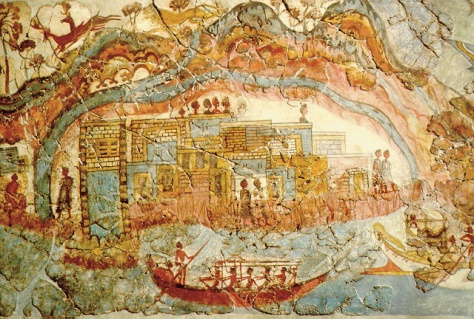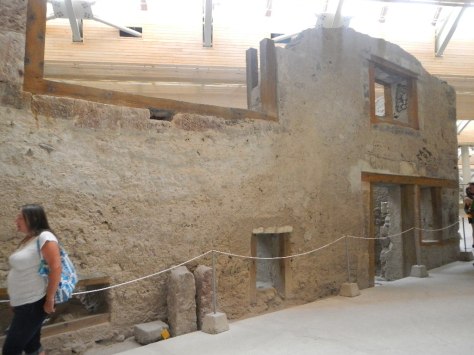Santorini is probably one of the most photogenic places I’ve ever visited, with distinctive white with blue trim villages tumbling down an almost vertical 250 meter cliff face hanging over an azure ocean.

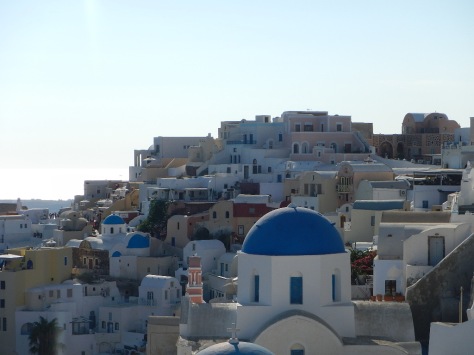
It’s not undiscovered by any means, and the crowds could get overwhelming at times, especially in picturesque little Oia where the sunsets drew crowds so thick even the countless bridal parties had to elbow their way in. Luckily there were always places to get a little distance from the crowds – a glass of wine on a sun drenched terrace overlooking the caldera at the sun dips into the ocean – a black sandy beach on the ‘other’ side of the island, or a day trip to Theressia, which gave glimpses of what Oia and Fira may have looked like before tourism.
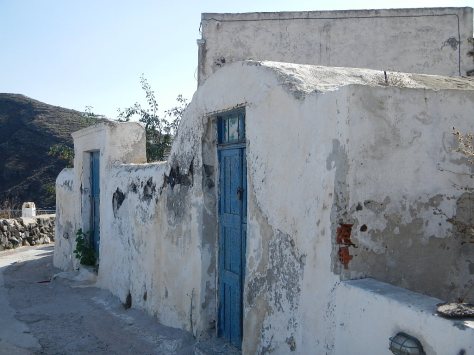
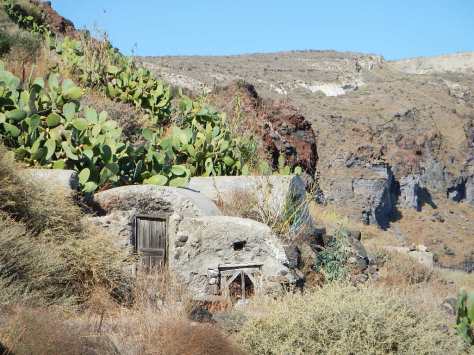
Akrotiri
The cauldera in the center of the Santorini islands blew its top some 4000 years ago, in what is considered the largest volcanic eruption witnessed by humans. The island (it was one island at that time) was inhabited (there is some evidence of human occupation going back to mid 6th millenium BC – or 8000 years ago) and the volcanic ash from the eruptions – meters thick in places – covered the entire island.
Of course this pretty much destroyed any cities/towns on the island at that time, and is also thought to have set off a tsunami that ravaged the shores of Crete – some 60 kilometers away – with the wave having a reach of 80 meters. Some feel that this tsunami wiped out all the coastal cities of Crete – leading to the demise of the seafaring Minoan civilization within a few generations.
On Santorini, the cities/towns were gone in a flash. At this point in time archaeologists have uncovered part of one city – a port town named Akrotiri – on the southern edge of the island facing Crete. The site was discovered in the mid-1960s, and has been undergoing excavation (on and off) since that time. We were fortunate to find the site open – it had been closed for seven years and reopened in 2012 after a the structure enclosing it collapsed and was rebuilt. Because it was covered by ash – it – like Pompeii – represents a snapshot in time of a working Theran city – similar to Minoan but thought to be a distinct civilization.
The city was thought to be one of the largest cities (perhaps 30,000 residents) in the Aegean in the 17th Century BC. It was toppled by an earthquake (and rebuilt) prior to the volcanic eruption, and was an example of advanced engineering and design. Some of the infrastructure included large public buildings, a main road (and alleys), three story buildings, a salt-water sewer system – including indoor toilets – and a separate drinking water system – with water possibly coming from the nearby hills through use of an aqueduct. The town’s importance as a trading center is clearly seen by the variety of pottery from around the region, the wide diversity of food (found at the bottom of pottery jars in one large building) and the weights and scales.



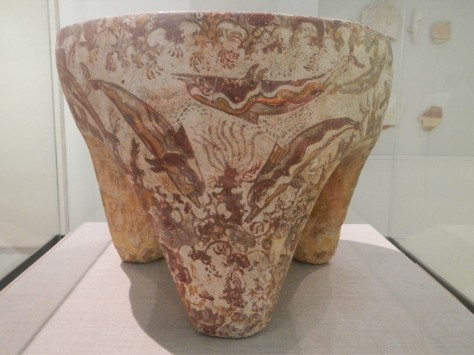
It’s estimated that only three percent of the site has been excavated – so theories about the Therans and the city can easily change – but at this point it is thought that the city’s residents left the city prior to the eruption with all their valuable belongings.

The city is remarkable well preserved under the thick layer of volcanic tuff, including some of the best wall frescoes from that period. They are absolutely astonishing (none are at the actual site – but there are a few in the Fira Museum and the remainder are in Athens) and paint a very complete picture of the civilization.
One of the ones I found most fascinating was the “Flotilla” – a procession of boats leaving from one city to arrive at another.

